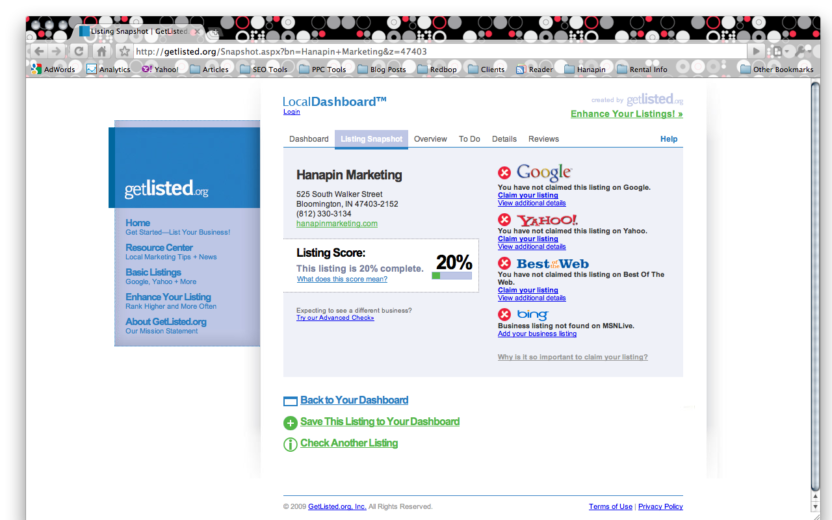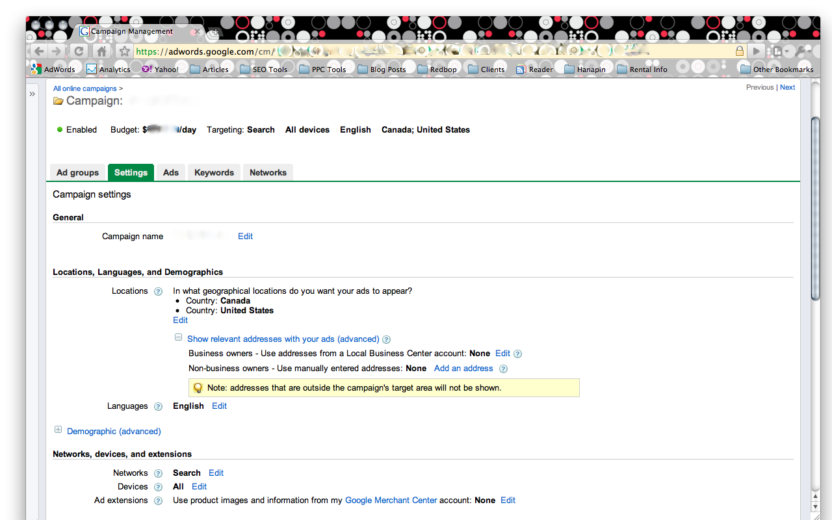Consumers today not only want to know what’s around them, they want to be able to call with one click, access directions, and know what other people think of it. Due to the fact that 50% of consumers head to search engines first when researching local businesses, according to a joint study from Nielsen and Webvisible, you need to make sure your business is in a position to compete.
In most cases, the way to most effectively reach a local audience is to combine geo-targeted PPC campaigns with accurate local listings. No matter what the user’s intent, your presence in both the ad space and local listings will help convey that you are a reliable resource.
Geo-Targeting
So let’s start with the three options you have for setting up your PPC campaigns. The first is to create a geo-targeted campaign, which allows your ads to only show in specified locations. The best part is that you have a wide array of areas that you can choose from, including countries, cities, and even a certain radius around your location. The second option is to add geo-qualified keywords to your campaigns, which are keywords that include the location in them, but any searcher, in any location, can see them. The third option would be to place geo-qualified keywords in your geo-targeted campaign, but the strategy you choose will be dependent on your target audience, and what makes the most sense in how to reach them.
Once you have identified the best way to reach your target audience, and you’ve set up your geo-targeted campaigns, you can move on to verifying your local listing information.
Setting Up Your Local Listings
Google, Yahoo!, and Bing all have a local listing center where you can set up and claim your business. However, I prefer to use GetListed.org, because you can set up and manage all three from one interface. It’s also a great way to keep tabs on the reviews your site has received, and keep a to-do list of the items that will help your local listings rank better.
Upon entering your company’s name and zip code, you’ll be taken to the snapshot page where you can see how many, if any, of your listings have been claimed in the engines.
From this page, you can click the links to claim your listing, and you are taken through a simple two to three step process. During these steps you will be able to enter valuable information for your customers like store hours, accepted forms of payment, and a description of your products or services. Once you are finished, you will have a direct line to each of the local interfaces where you can see that your listings have been verified, and you can make any necessary changes as time goes on.
Advanced Location Settings In Google
In addition to preventing your listing from being hijacked, claiming your listing can also benefit your PPC campaigns in Google. Under campaign settings, you now have the option to show relevant addresses with your ads to searchers that are in your targeted area. When you think about it, what better way is there to stand out to your potential customers than to have a relevant geo-targeted ad along with an accurate address?
In order to turn this feature on, after your listing has been claimed in Google, click on the campaign you want to edit, and go to the settings tab. Under Locations, Languages, and Demographics click on the link that will allow you to show relevant addresses with your ads (advanced). From here you will see your location extension options.
Though it is possible to enter an address that has not been verified, the benefits of claiming your listing far outweigh the effort to do so, so I would not recommend skipping that step.
Positioning Your Business For Success
Marketers today consider local search to be the fastest growing online division. And according to Michael Boland, program director, Mobile Local Media (MLM), The Kelsey Group, “As mobile data consumption rises, we expect local marketing to be a big winner. There is a strong correlation between local search and the mobile use case, which will cause a good portion of the ongoing mobile application boom to focus on local.”
Positioning yourself with geo-targeted PPC campaigns and tying them to your claimed local listings will help you get ahead of your competition, and establish a local presence where qualified consumers are. Doing the work today will help ensure that you are ready to ride the wave of local and mobile search, and your money will be spent on the most qualified traffic.





